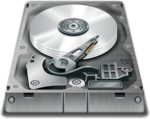Graphics: Panfrost, VKD3D, ROCm and Super-Resolution

-
Panfrost With Linux 5.10 To Support Mali GPU On Amlogic G12B SoCs
Sent out on Monday were a last batch of drm-misc-next changes to queue for the Linux 5.10 merge window opening next month.
This pull request wasn't too exciting given all of the other DRM changes queued over the past several weeks, but one notable addition was the open-source Arm Mali "Panfrost" DRM driver now supporting Amlogic hardware.
New device quirks had to be introduced to the driver for providing compatibility with Amlogic G12B SoCs. There was quirk handling added around the PWR registers at GPU reset time and an IOMMU quirk that was needed for getting the Mali G52 on the Amlogic G12B SoCs behaving correctly.
-
VKD3D 1.2 Is Ready To Offer Better Direct3D 12 To Vulkan Support
Patches pending for VKD3D take this Direct3D 12 to Vulkan translation library up to version 1.2. This library continues advancing in pushing along the D3D12-over-Vulkan performance primarily for Windows games on Linux just as DXVK has done for D3D9 through D3D11.
With VKD3D 1.2 there is support for more Direct3D 12 functionality,libvkd3d-shader as its own standalone public library, new VKD3D_CONFIG / VKD3D_VULKAN_DEVICE environment variables among others for overriding different behavior, tessellation shaders support, support for using SPIR-V produced by libvkd3d-shader to be consumed by GL_ARB_gl_spirv, preliminary support for Shader Model 5.1 shaders, more shader instructions now handled, and various other changes.
-
Radeon ROCm 3.8 Released With Hipfort For Fortran On GPUs, Data Center Tool
Version 3.8 of ROCm, the Radeon Open eCosystem, is now available. This release continues making more progress on preparing the ROCm graphics compute stack for the upcoming large AMD supercomputer deployments and other data center usage.
ROCm 3.8 introduces the Hipfort interface library for accessing GPU kernels, which allows for interfacing via the Fortran programming language with Radeon GPUs. This Hipfort Fortran implementation is currently catering to GCC's Gfortran front-end.
-
Open Source meets Super Resolution, part 1
Despite their great upscaling performance, deep learning backed Super-Resolution methods cannot be easily applied to real-world applications due to their heavy computational requirements. At Collabora we have addressed this issue by introducing an accurate and light-weight deep network for video super-resolution, running on a completely open source software stack using Panfrost, the free and open-source graphics driver for Mali GPUs. Here's an overview of Super Resolution, its purpose for image and video upscaling, and how our model came about.
Internet streaming has experienced tremendous growth in the past few years, and continues to advance at a rapid pace. Streaming now accounts for over 60% of internet traffic and is expected to quadruple over the next five years.
Video delivery quality depends critically on available network bandwidth. Due to bandwidth limitations, most video sources are compressed, resulting in image artifacts, noise, and blur. Quality is also degraded by routine image upscaling, which is required to match the very high pixel density of newer mobile devices.
The upscaling community has provided us with many fundamental advances in video and image upscaling, from classic methods such as Nearest-Neighbor, Linear and Lanczos resampling. However, no fundamentally new methods have been introduced in over 20 years. Also, traditional algorithm-based upscaling methods lack fine detail and cannot remove defects and compression artifacts.
All of this is changing thanks to the Deep Learning revolution. We now have a whole new class of techniques for state-of-the-art upscaling, called Deep Learning Super Resolution (DLSR).
-

- Login or register to post comments
 Printer-friendly version
Printer-friendly version- 3879 reads
 PDF version
PDF version
More in Tux Machines
- Highlights
- Front Page
- Latest Headlines
- Archive
- Recent comments
- All-Time Popular Stories
- Hot Topics
- New Members
digiKam 7.7.0 is released
After three months of active maintenance and another bug triage, the digiKam team is proud to present version 7.7.0 of its open source digital photo manager. See below the list of most important features coming with this release.
|
Dilution and Misuse of the "Linux" Brand
|
Samsung, Red Hat to Work on Linux Drivers for Future Tech
The metaverse is expected to uproot system design as we know it, and Samsung is one of many hardware vendors re-imagining data center infrastructure in preparation for a parallel 3D world.
Samsung is working on new memory technologies that provide faster bandwidth inside hardware for data to travel between CPUs, storage and other computing resources. The company also announced it was partnering with Red Hat to ensure these technologies have Linux compatibility.
|
today's howtos
|









.svg_.png)
 Content (where original) is available under CC-BY-SA, copyrighted by original author/s.
Content (where original) is available under CC-BY-SA, copyrighted by original author/s.

vkd3d, the Direct3D 12 to Vulkan translation library releases...
vkd3d, the Direct3D 12 to Vulkan translation library releases version 1.2